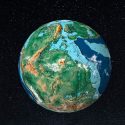Australia tends to top the world’s most deadly creature charts for a good reason. If you’re about to venture down under, you’ll want to make sure you don’t dip your toe in the wrong place. If you do, you won’t be on your flight back home. Sure, you’ve seen the videos of boxing kangaroos, and you think you can easily survive in Australia. But you haven’t seen anything like the animals on this list.
We’ll show you the creepiest and deadliest critters you could encounter on the continent and teach you how to handle an encounter like a true Aussie. Why would this snake bite you as you sleep? Which bird could slice you open with one kick? And how could this mollusk kill 700 people?
Number 5: The Funnel-web Spider
This creepy crawler is called the deadliest spider on Earth. At only 1-5 cm (0.4-2 in), this arachnid’s venomous bite has neurotoxic proteins which would attack your nervous system. Funnel-web spiders typically bite our hands or feet in self-defense, and it’s going to hurt. Make sure you wrap something around your bitten limb to slow the venom from moving around your body, and get to a hospital for antivenom. Funnel-web spiders have crawled into people’s homes and fallen into swimming pools, where they can survive underwater for hours. So if you see a funnel-web spider at the bottom of a pool, don’t touch it with your skin.
Number 4: Mulga Snake
Also called the king brown snake, this serpent lives in most parts of Australia.
It’s usually about 2 m (6.5 ft) long but can grow to 3.3 m (11 ft). Mulgas are extremely aggressive and won’t hesitate to bite you, even if you’re sleeping. A mulga’s bite is quite different from other snakes’. Once it gets a grip on you, it’ll hang on and chew on you, causing excruciating pain. This slithering beast has a potent venom that can break down your blood cells and degrade your muscles.
If a mulga snake bites you, put a pressure bandage on the bite and keep your limb still. You’ll need to receive antivenom as soon as possible.
Number 3: Textile Cone Snail
In April 2021, a teenager from Queensland, Australia found what looked like an empty cone on a beach.
The 19-year-old picked it up, thinking it was harmless. But it turned out to be a cone snail. The teen almost died from its extremely powerful venom. Although they only grow up to 22 cm (8.5 in) long, these mollusks have a harpoon-like tooth that’s so strong it can puncture your skin even if you’re wearing gloves or a wetsuit. One type of cone snail’s venom contains hundreds of toxins and could be strong enough to kill 700 people. People have died from cone shell bites, and there’s no antivenom. Plunge the bitten area into hot water to help reduce the pain, and head for a hospital. The doctors may need to put you on a respirator.
Number 2: Irukandji Jellyfish
In Australia, you’ll likely want to dive into the refreshing blue waters, but beware of this tiny ocean dweller. Its body is only about the size of a sugar cube, but the Irukandji is the most venomous box jellyfish in the world. After the sting, you may develop Irukandji syndrome. It causes agonizing muscle and back pain, blood pressure issues and you could die from too much fluid in your lungs or heart complications. If you suspect this type of jellyfish has stung you, get out of the water immediately. Douse the bite with vinegar and remove the tentacles using tweezers. If you develop Irukandji syndrome, get medical help right away.
Number 1: Cassowary
These mighty creatures with their pretty colors are the deadliest birds on Earth.
They can’t fly, but they can run up to 48 km/h (30 mph). You don’t want to mess with cassowaries. These big birds can grow up to 2 m (6.5 ft) tall, and they can easily slice you open with their 10 cm (4 in) claws. If you’re near one of these gigantic birds, be fully alert. These are very territorial birds, and if they feel threatened cassowaries will kick, charge and jump at humans. Cassowaries could attack if you try to feed them. Move away without turning your back on the bird, and get behind a tree if a cassowary confronts you.
You survived these dangerous beasts.
Sources
- Meet Australia’s Deadliest Animals. Griffiths, E. (2018). Culture Trip.
- How Deadly Are Australia’s Animals?. Matthias, M. (2022).Brittanica.
- How to Survive a Portuguese Man o War Sting – According to Science. Nelson, R. (2020). StoneAgeMan.
- Human injuries and fatalities due to venomous marine snails of the family Conidae. Kohn, A. (2016). National Library of Medicine.

















